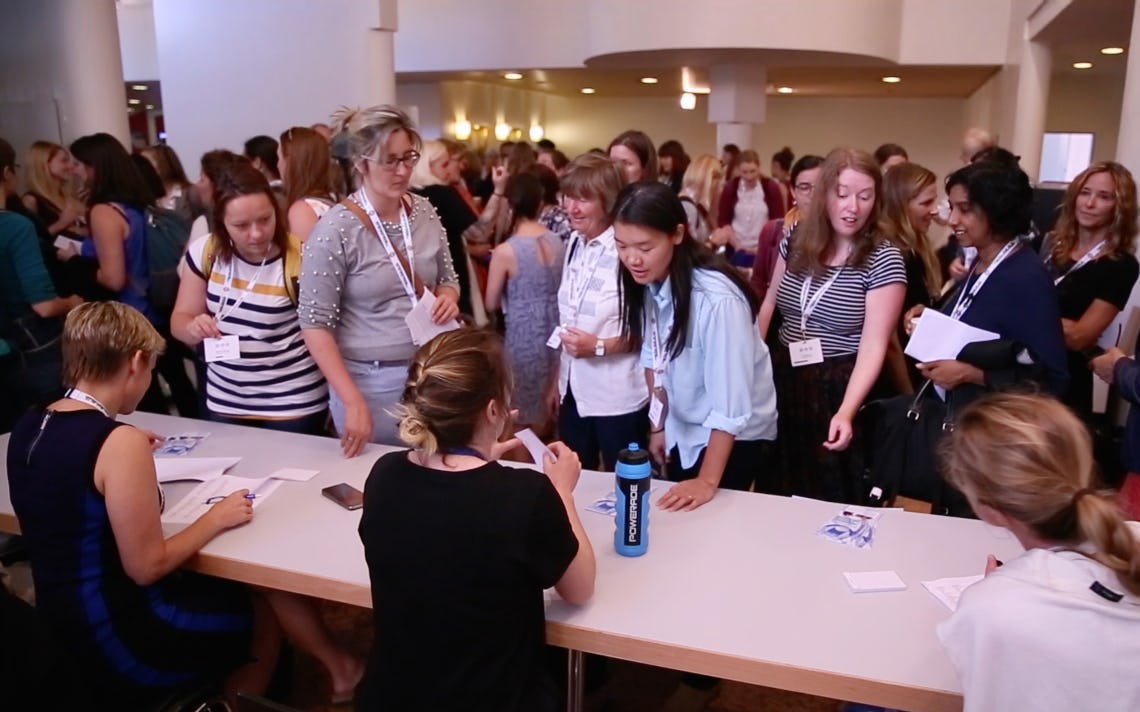The Gender Gap in Arctic Research Awards and Leadership - Infographic

Women registering to attend a panel discussion on women’s perspectives in polar research at POLAR 2018. Photo: Stephen Curtain
In recent years, women researchers, scientists, and local champions have elevated their visibility and empowered their voices across the world. The Arctic is no exception. With powerful organizations like 500 Women Scientists and local movements like Women in Polar Science and Plan A growing their reach and impact, women are sharing their personal narratives, highlighting their contributions, and supporting each other like never before. The Arctic Institute’s Breaking the Arctic’s Ice Ceiling is our team’s contribution to this movement. In a series of commentaries, articles, and multimedia posts, we are highlighting the work of women working and living in the Arctic.
The Arctic Institute Breaking the Arctic's Ice Ceiling Series 2019
- Looking Up: Women in Arctic Science
- The Gender Gap in Arctic Research Awards and Leadership – Infographic
- An Arctic Imposter’s Journey to Belong
- Women Are America’s Climate Change Champions
- Vegan at Sea-gan: The Arctic Ocean
- Golden Rule in Arctic Science and Community Partnerships
- Is the Future of the European Arctic Socially Sustainable?
- Geo-mapping in the Canadian Arctic
- Women in Polar Research: A Brief History
- It’s Our Table: Indigenous People Shaping Arctic Policy
The participation of women in polar science has been increasing. However, like many fields of science the recognition of the contributions of women to Arctic research and education are often overlooked. This infographic is a preliminary quantitative assessment of the gender gap in Arctic research recognition and leadership. The International Arctic Science Committee (IASC) is an international non-governmental organization that promotes Arctic research to foster a greater scientific understanding of the Arctic region and its role in the Earth system. It awards one IASC medal each year to recognize exceptional and sustained contributions to Arctic research. Since its inception in 2010 only one woman was awarded the IASC medal. Nominations for the IASC medal have also been declining over time. The data on IASC award nominations was obtained from IASC.
The gender gap in leadership for Arctic research and education institutions is a single point in time snapshot of reported heads of institutions that are members of the University of the Arctic (UArctic). A total of 193 institutions reported by continent are presented in the infographic where the gender of the institution leader could be identified. In the analysis, no LGBTQ leaders were identified. It is important to note that some UArctic member institutions may have had women as institutional leaders in the past, but this was not captured in the current status of reported leadership from September 2018. The infographic also does not capture women in Arctic research institutions that are not currently members of UArctic, or that may hold lower leadership roles within an institution. It is hoped that by recognizing the gap in nominating women for awards recognizing their research contributions, and identifying the gender gap in Arctic research and education leadership, the broader Arctic community can take steps to narrow the gender gap.